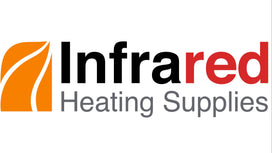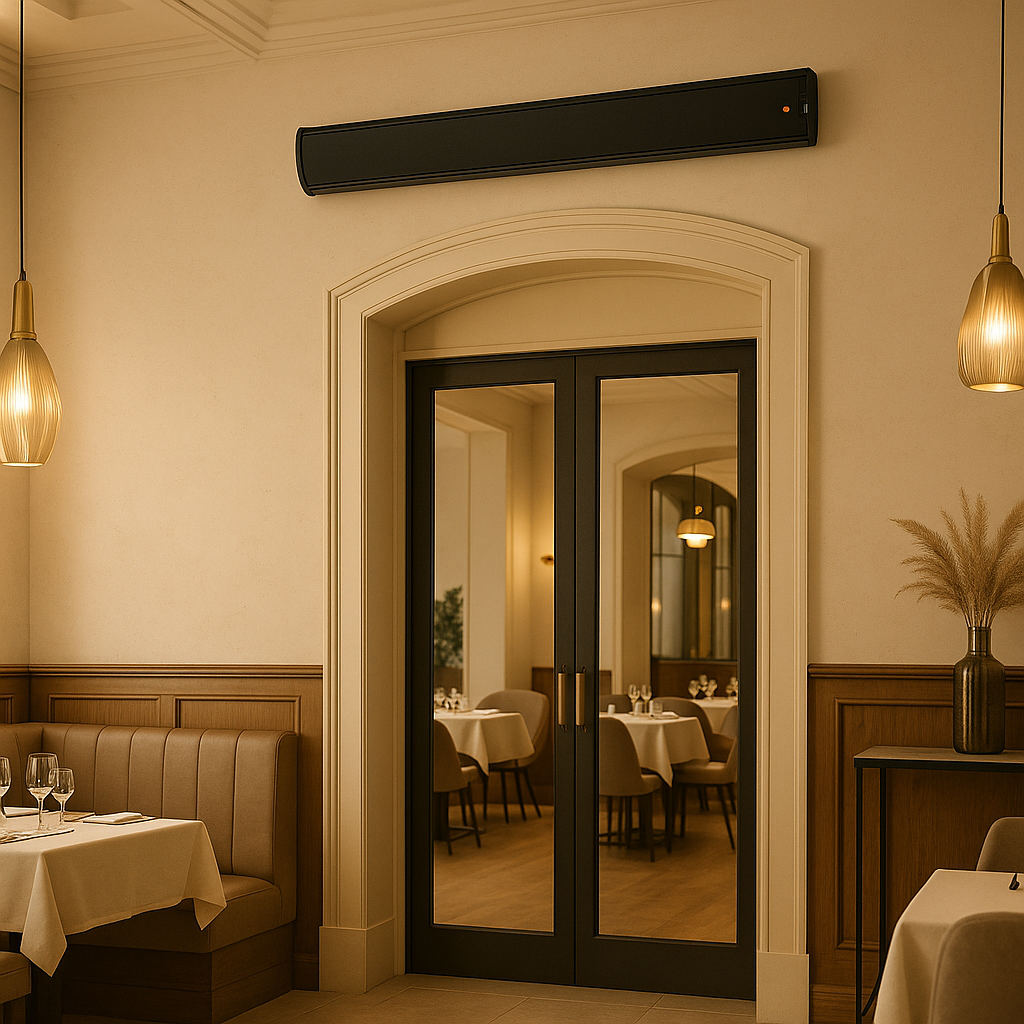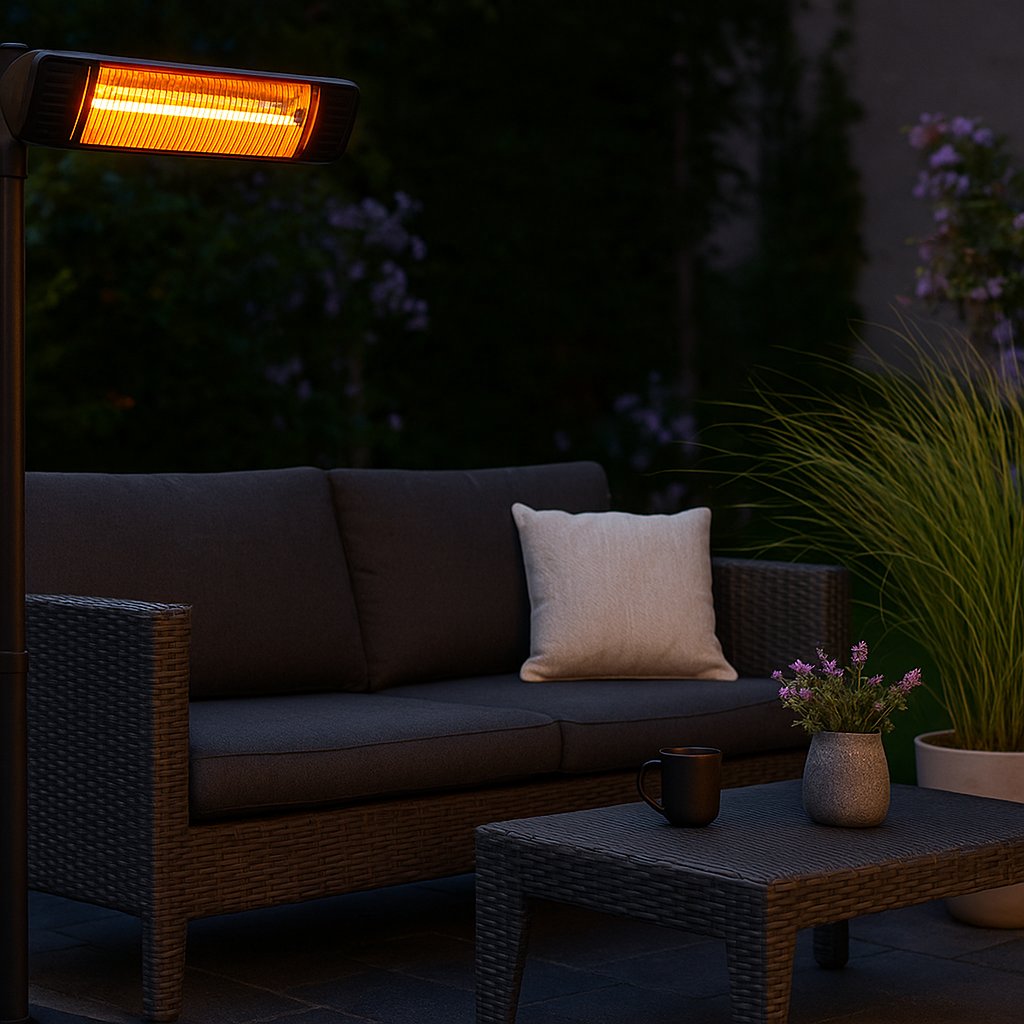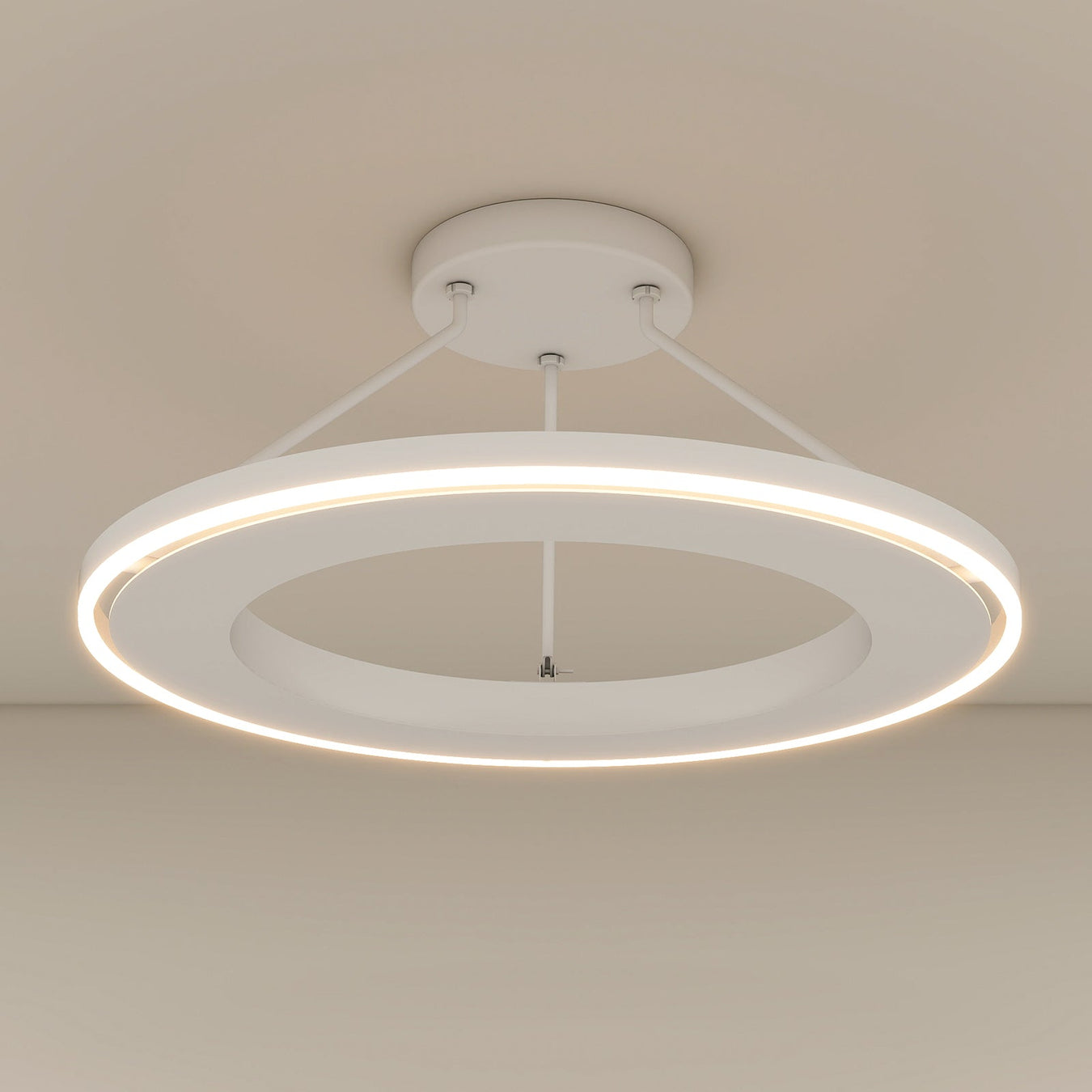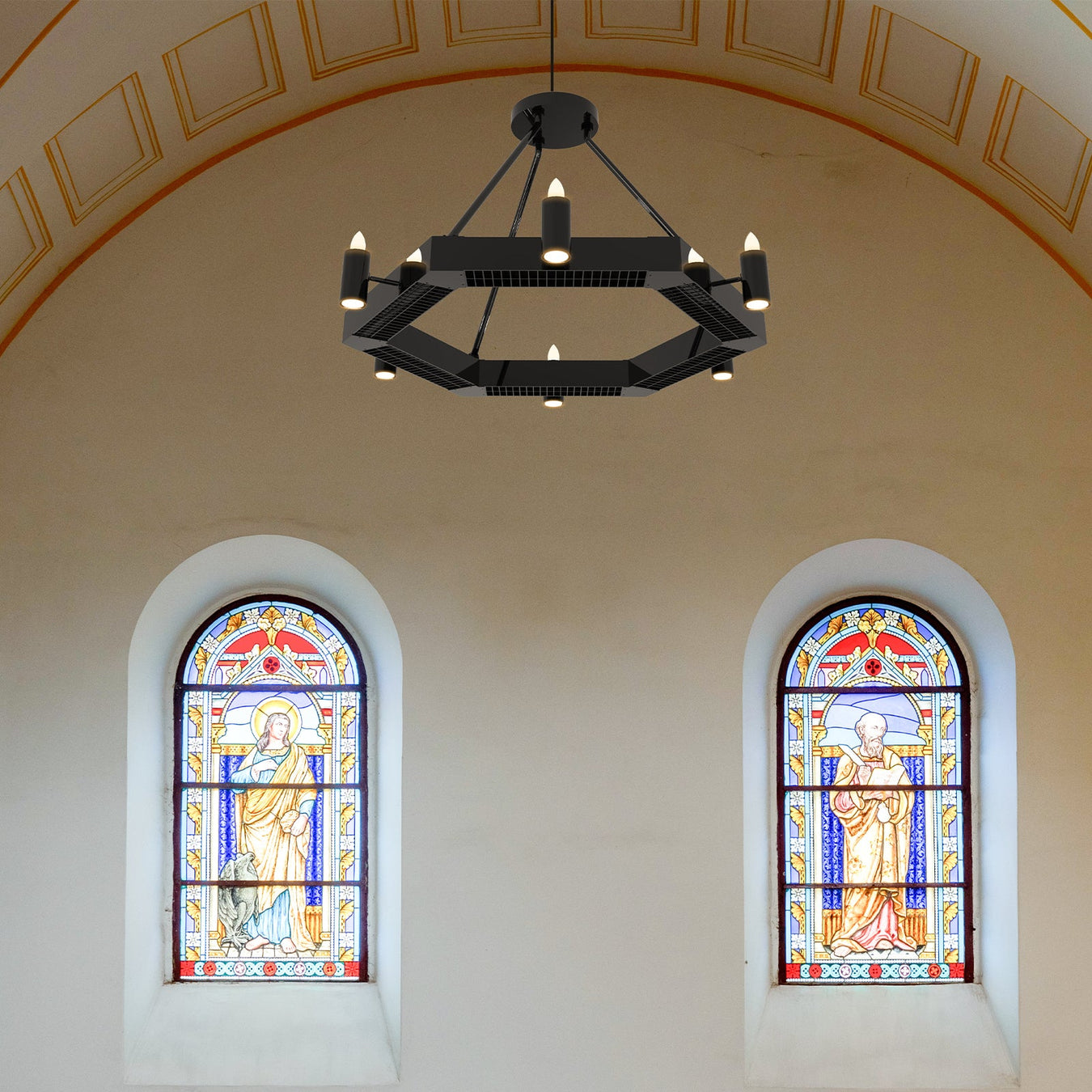
In the chilly world of warehouse management, maintaining optimal temperatures can be a constant battle. It’s essential to keep your warehouse heated to ensure your employees remain comfortable and your products are stored in the best conditions. Whether it’s logistics, manufacturing or storage, efficient warehouse heating solutions play a vital role in preserving goods and improving staff productivity.
Traditional heating methods like warm air heaters often struggle in these vast, high-ceilinged environments — heat rises, energy is lost, and your staff are left shivering. Not to mention, the operating costs can spiral out of control. But what if there was a smarter, more efficient approach?
Enter infrared heating for warehouses — a revolutionary technology that directly warms people, floors, walls and equipment instead of wasting energy trying to heat the air. This radiant heat technology provides zonal warmth exactly where it’s needed, making it an ideal fit for busy warehouses with fluctuating occupancy and open doors.
At Infrared Heating Supplies, we’ve helped countless businesses lower their energy bills, reduce their carbon footprint and dramatically improve comfort in industrial environments. Our infrared bar heaters and panel systems can be wall-mounted, ceiling-mounted, or suspended using custom brackets to suit any layout — from compact loading bays to sprawling fulfilment centres.
Still relying on blowers or convection heaters? You might be heating empty air while your workforce stays cold. With infrared heating technology, you can focus warmth on key work areas — like packing zones, mezzanines, or staff assembly points — while using less energy and achieving faster heat-up times.
Warehouse Heating Comparison Chart
| Feature | Warm Air Heaters | Infrared Heaters |
|---|---|---|
| Heating Method | Heats air using fans and convection | Heats people and surfaces directly |
| Energy Efficiency | Lower — heat rises and escapes | Higher — targeted zonal warmth |
| Speed of Heating | Slow — entire volume must warm | Fast — instant radiant heat |
| Maintenance | Requires fan & duct servicing | Minimal maintenance required |
| Air Quality | Can circulate dust & allergens | No air movement = cleaner air |
| Noise Level | Noisy due to fans | Silent operation |
| Installation | Requires ducting and vents | Wall or ceiling mountable |
| Operational Cost | High — runs constantly | Low — runs only when needed |
Read more: Why infrared heating is the cost-efficient solution.
Recommended Products for Heating for Warehouses and Factories
Why Choose Infrared Heating Panels?

Energy Efficient
Save up to 60% on your heating bills compared to traditional heating methods.

Health
Reduces dust circulation and improves air quality — great for allergies.

Enhanced Comfort
Even heat distribution with no cold spots, just warm, balanced spaces.

Zoned Heating
Heat only the rooms you use, increasing efficiency and reducing waste.

Quick Instant Heat
Feel warmth almost immediately — perfect for cold mornings and rooms.

Low Maintenance
No moving parts means less to go wrong. Just install and enjoy.

Silent Operation
No fans or noise. Enjoy uninterrupted warmth in peace and quiet.

Damp & Mould Prevention
Reduces condensation and moisture by heating surfaces evenly.
Benefits of Infrared Heating in Warehouses
Infrared heating systems offer substantial advantages over traditional convection systems — particularly in large-scale, high-ceilinged spaces like warehouses. These benefits aren’t just theoretical; they translate into measurable improvements in energy efficiency, employee comfort, and operational cost savings.
Direct Heat Transfer: Unlike conventional heating that warms the air (which then rises), infrared technology radiates heat directly to people, floors, and surfaces. This prevents energy loss and ensures warmth is felt where it matters most — at working level.
Zone Heating Capability: Heaters can be installed in specific areas such as packing benches, production lines or goods-in bays. This targeted approach means you only heat occupied areas, dramatically reducing energy waste and costs.
Improved Thermal Comfort: Radiant warmth from infrared heaters provides a consistent, draught-free environment with fewer hot or cold spots — ideal for maintaining comfort during shifts.
Reduced Stratification: Traditional systems often result in heat collecting near the ceiling. Infrared heating solves this by directly warming the workspace, eliminating the need for destratification fans.
Minimal Maintenance: With no fans, ducts or filters, our infrared bar heaters require little to no maintenance — reducing downtime and service costs.
Healthier Air Quality: No moving air means no dust or allergens circulating through the workspace — great for workers with respiratory conditions and for keeping sensitive products clean.
See it in action: Discover how a major UK retail chain cut energy usage and improved comfort with our infrared heaters.
How to Design the Perfect Infrared Heating System
Designing an effective industrial infrared heating system begins with calculating the heat load of your warehouse — considering total floor space, ceiling height, insulation levels and typical occupancy zones.
Key design factors include:
- Ceiling height: Higher ceilings demand more powerful heaters or suspended mounting for optimal reach.
- Obstacles: Lighting, ductwork or racking can block radiant heat. Clear line-of-sight is key.
- Staff movement: Focus heat on where employees actually work — loading bays, picking stations, etc.
- Heat loss areas: Near roller shutters or draft-prone entry points, place high-output units for compensation.
We recommend using our Wattage Calculator to estimate your heating requirements accurately, then select from our powerful range of Infrared Bar Heaters.
Zoning for Maximum Efficiency
Split large warehouses into distinct heating zones based on function and usage. For example:
- Zone 1: Main picking/packing floor
- Zone 2: Office mezzanine or management area
- Zone 3: Dispatch/loading bays
Each zone can have its own thermostat for precise control and timing schedules — ensuring that only the active areas are heated during working hours.
For smaller zones, choose built-in thermostat models. For larger installations, group several units into one circuit and control via a programmable thermostat.
Conclusion: Why Infrared is the Smart Choice for Warehouses
Infrared warehouse heating delivers significant energy savings, superior comfort, and low-maintenance performance — all while supporting your sustainability goals. It’s a future-ready choice for facilities seeking to upgrade from outdated warm air blowers and reduce long-term heating costs.
Whether you operate a logistics hub, fulfilment centre or temperature-sensitive storage facility, our commercial infrared heaters provide an efficient, eco-conscious alternative that prioritises worker wellbeing and carbon reduction.
Let’s design the perfect system for your warehouse.
Contact
If you require any further information or have any questions, then please contact us and speak to one of our specialist technical team who will be happy to help. Call us on 01204 520544 or email us at info@infraredheatingsupplies.com.
